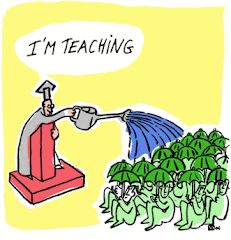Reflect on the following definitions of authenticity/authentic materials and choose one or two that seem most relevant to your own teaching context.
1. For the traditional ESP practitioner, there was no simplification of real discourse for pedagogical purposes; instead, authentic, unmodified oral and written texts were provided for students at every proficiency level. A new definition for authenticity has arisen which considers the authenticity of strategies and activities instead of the authenticity of discourse.
(Ann M. Johns)
2. Pure, authentic materials are not possible in ELT classroom, e.g. an article cut from a real newspaper used in whatever way in class is no longer authentic. But what we can have is quasi-authentic material, either real or written in authentic style that is treated in class in a manner close to how it is used in the real world.
(Pat McLaughlin)
3. Authentic texts can actually be created by the ESP teacher or student, as long as they follow the regular rhetorical pattern.
4. 'Authentic materials' are 'genuine' materials removed from their real-life context for use in a communicative classroom.
(Mike Scholey)








No comments:
Post a Comment